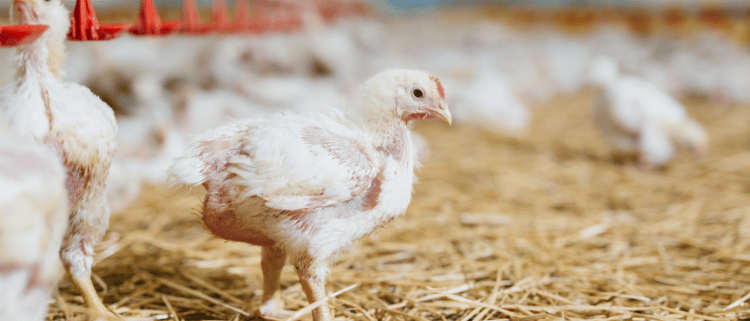Novel yeast supports broilers in necrotic enteritis challenge
Case study describing the response of broilers to a novel yeast in their diet during a necrotic enteritis challenge.
Published in Livestock and Feed Business, June 2022
Author: Sarah Cooper
Pathogenic and physiological challenges are ubiquitous in animal production systems as they threaten efficient and profitable production. Tools (like growth-promoting antibiotics and ionophores) once used to improve production efficiency are increasingly being restricted. As such, there is a growing interest in evolved management and nutritional practices.
Yeasts have been fed to animals for over 100 years due to their nutritional richness and reported effects to support health and growth performance. Saccharomyces cerevisiae is the most used yeast in animal feed applications. Yeast cell walls contain various bioactive components like ß-glucans and mannan oligosaccharides, which have shown to have beneficial impacts across various species. Several studies revealed that dietary ß-glucans interact with intestinal cells affecting the modulation of the intestinal immune response. Mannan oligosaccharides have also been demonstrated to bind and limit the colonisation of intestinal pathogens with beneficial consequences related to gastrointestinal health and ensuing performance.
Pichia guilliermondii, an extraordinary yeast
Pichia guilliermondii is a novel yeast with unique morphology, structure and consequent activity. The way yeast cells in animal feed behave in the animal’s intestinal environment (interacting with intestinal epithelium and luminal contents) depends on the morphology, cell wall structure and composition.
The comparative morphology and physical characteristics of P. guilliermondii and S. cerevisiae were assessed in a side-by- side study. There are significant differences between them: P. guilliermondii is a smaller cell and has a greater surface area to volume ratio. It is also more hydrophobic compared to S. cerevisiae.
Additionally, the distribution of various glycoproteins in the yeast cell wall varies, suggesting that P. guilliermondii has a different cell wall structure and composition to S. cerevisiae. These particularities may be associated with significant differences in how both yeast cells behave when used in animal feeds.
The function of P. guilliermondii and associated influence on physiological and performance parameters have been assessed across various animal species. This body of research has focused on exploring the impact that may be associated with P. guilliermondii on the immune system, pathogen load, gastrointestinal health and performance, especially during stress and pathogenic challenges.
Pichia in action: A broiler case study for necrotic enteritis challenge
Coccidiosis and necrotic enteritis represent the greatest threat to poultry production globally, being detrimental to animal welfare and having economic impacts.
In an experimental necrotic enteritis study with broilers, birds that received P. guilliermondii supplementation showed indications of increased resilience and improved performance compared to control birds that did not receive any P. guilliermondii in their diet.
In this 42-day long study, newly hatched Ross 708 broilers were assigned to either the three-phase basal control diet or the three-phase basal diet plus 0.1% P. guilliermondii until day 28, then 0.075% P. guilliermondii until day 42.
The necrotic enteritis challenge consisted of adding used litter to introduce coccidia on day 4 and challenging birds with Clostridium perfringens on days 17, 18 and 19.
A group of birds on the basal control diet did not receive the challenge and acted as the non-infected control group. On day 21, birds from each group were randomly selected and euthanised, with their intestines examined for necrotic enteritis lesions. Lesion scores range from 0 (for normal) to 4 (for the most severe lesions).
Birds receiving P. guilliermondii in their diet had lower intestinal lesions compared to challenged birds receiving only the control diet. The significantly lower intestinal lesion scores in the P. guilliermondii-fed birds suggest greater physiological resilience in the face of the necrotic enteritis challenge, compared to the birds with more severe lesion scores in the infected control group. At the end of the study, on day 42, P. guilliermondii– supplemented birds had improved performance parameters compared to the infected control group. The adjusted feed conversion ratio was better in the group that had received P.guilliermondii in their diet. These birds also had a significantly greater body weight. Of note, day 42 mortality was numerically lower in the P. guilliermondii group compared to the infected control group.
P. guilliermondii has unique morphological properties influencing its efficacy in animal feeding. Research has demonstrated that the addition of P. guilliermondii to the diet of broilers may be associated with beneficial impacts on parameters in the face of coccidiosis and necrotic enteritis
Relevant articles
Webinar recording – Necrotic enteritis advances in control



